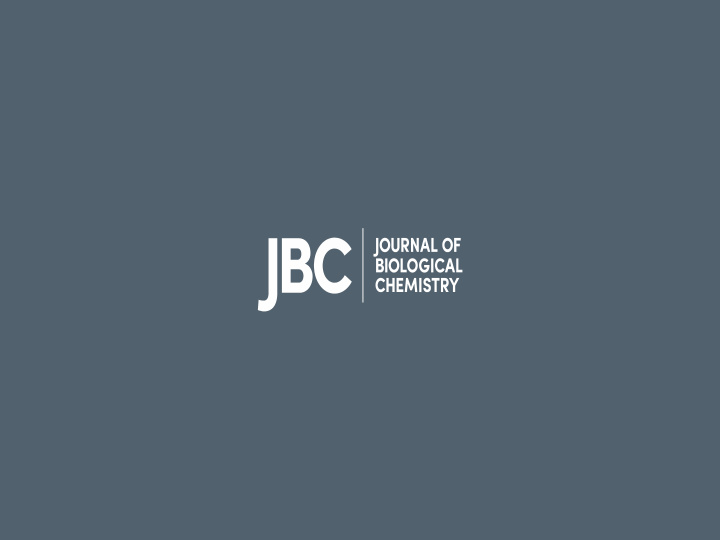



Why Publish in JBC F. Peter Guengerich Editorial Board Member Orientation April 22, 2017 Hyatt Regency Chicago, IL
EBMs Publishing in JBC 3
Why Should You Publish in JBC? • Long-standing reputation (110 years old!) • Editorial decisions & reviews by practicing scientists, like yourself • A very innovative journal − First electronic journal − First to publish “papers in press” next day − We are really “open access” • Covers many types of research, including yours • Fast review (mean time to first review 20 days) • No charge for color art (for ASBMB members) • Your publishing in JBC helps support the ASBMB & its programs • You are on the Editorial Board − If JBC is worth your time reviewing papers, it is worth publishing in too! − If EBMs don’t publish in the JBC, how can we convince anyone else to? 4
5
6
More Performance Parameters For biochemistry & molecular biology, JBC ranks: • 1st in Total Citations • 2nd in Eigenfactor score ( vide supra ) • For cited half-life, JBC is tied with many journals for a top score of >10 7
Congratulations to JBC’s Recent Nobel Laureates! 2015 Nobel prize in physiology or medicine For discoveries of novel therapies against parasitic infections Ōmura's most recent papers: Novel Mitochondrial Complex II Isolated from Trypanosoma cruzi Is Composed of 12 Peptides Including a Heterodimeric Ip Subunit Identification of the Interaction Site within Acyl-CoA:Cholesterol Acyltransferase 2 for the Isoform-specific Inhibitor Pyripyropene A Satoshi Ōmura Crystal Structure of the Non-heme Iron Dioxygenase PtlH in Pentalenolactone Biosynthesis + 12 Additional JBC papers by Satoshi Ōmura 8
Congratulations to JBC’s Recent Nobel Laureates! 2015 Nobel prize in chemistry For mechanistic studies of DNA repair Tomas Lindahl Paul Modrich Aziz Sancar, EBM 74 papers in JBC 27 papers in JBC 89 papers in JBC http://www.jbc.org/site/misc/nobelprize.xhtm l 9
Congratulations to JBC’s Newest Nobel Laureate! 2016 Nobel Prize in Medicine Ohsumi’s most recent papers: The Thermotolerant Yeast Kluyveromyces marxianus Is a Useful Organism for Structural and Biochemical Studies of Autophagy Atg9 Vesicles Recruit Vesicle-tethering Proteins Trs85 and Ypt1 to the Autophagosome Formation Site Structure-based Analyses Reveal Distinct Binding Sites for Atg2 and Phosphoinositides in Atg18 The Autophagy-related Protein Kinase Atg1 Interacts with the Ubiquitin-like Protein Yoshinori Ohsumi Atg8 via the Atg8 Family Interacting Motif to Facilitate Autophagosome Formation Frontier Research Center, Tokyo Institute 10 Additional Papers by Ohsumi. of Technology awarded full prize 10
Why not publish in JBC? 11
Recommend
More recommend